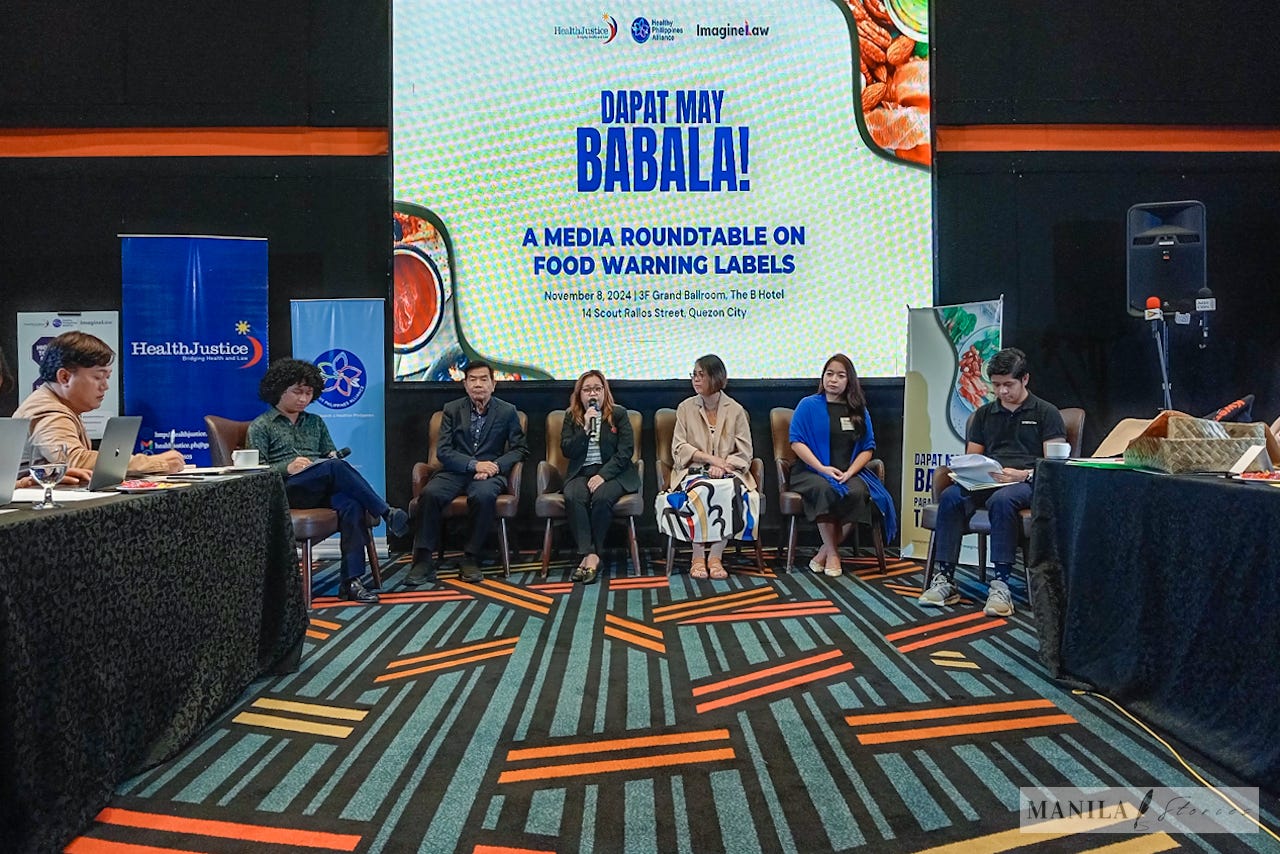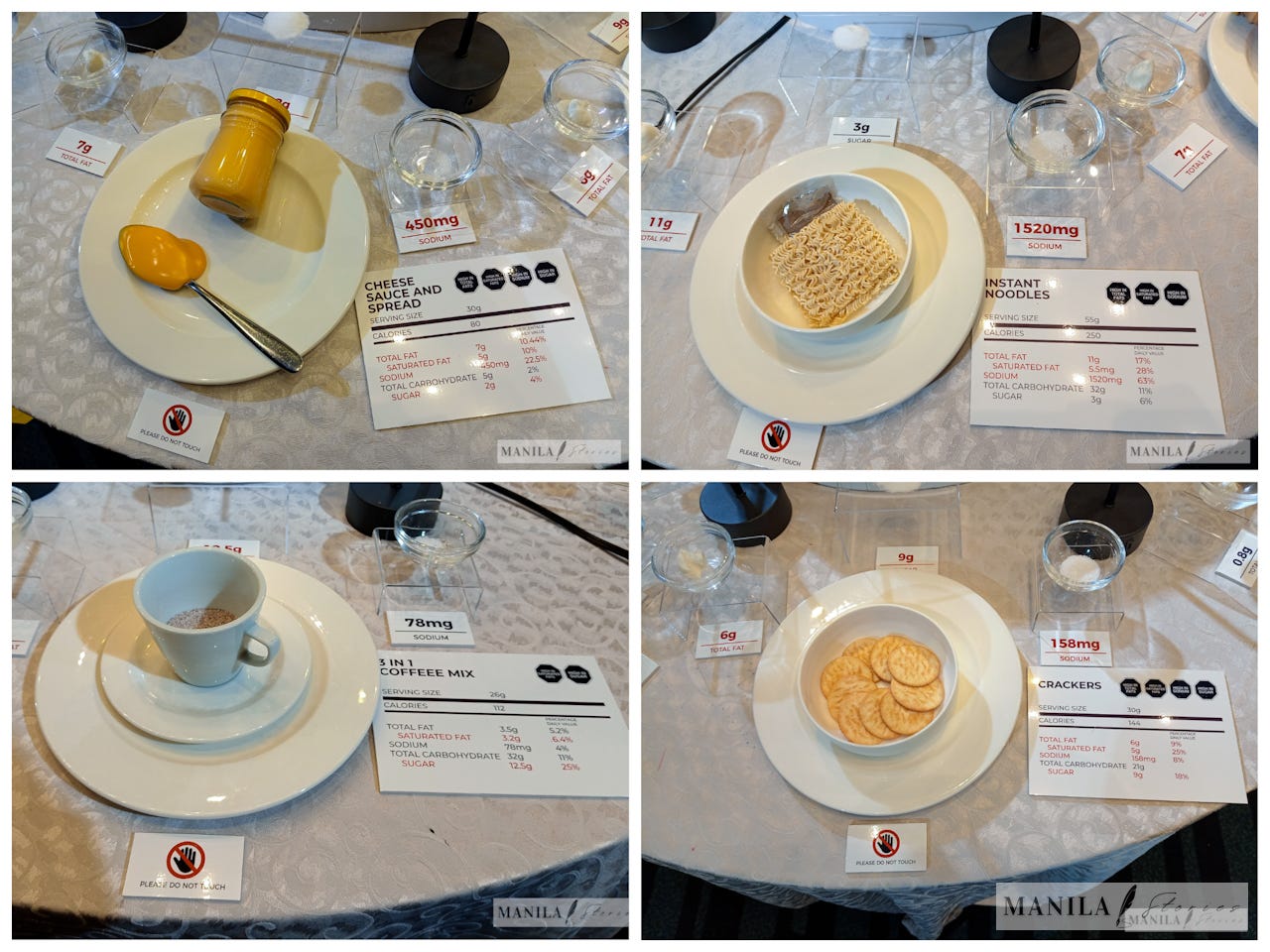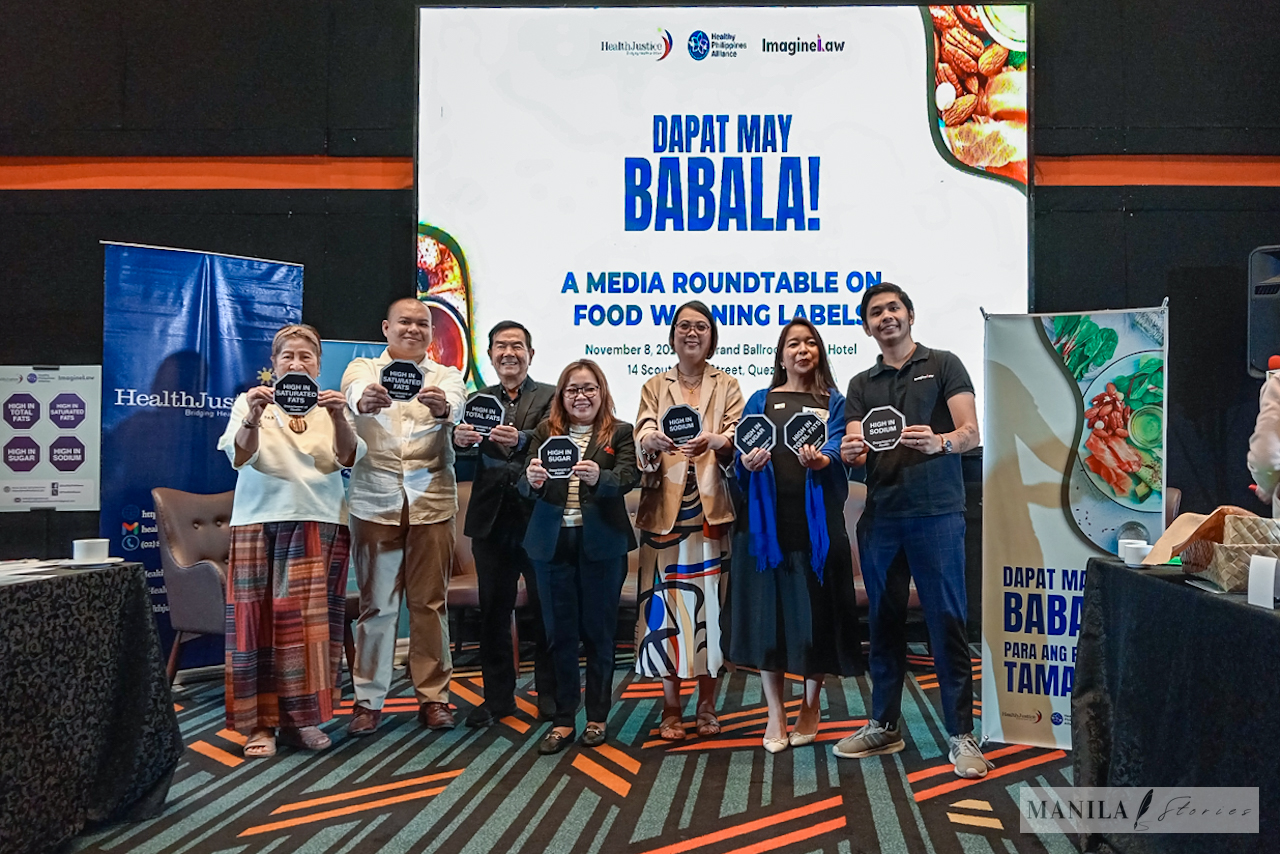
Health advocates are pushing for mandatory front-of-package warning labels on food products. They arguing that it’s a crucial step in protecting Filipinos, especially children, from the growing threat of non-communicable diseases (NCDs).
The Healthy Philippines Alliance (HPA), HealthJustice Philippines, and ImagineLaw held a media round table. They highlighted the urgent need for these labels. They believe that current nutrition labels fall short. Consumers need better alerts on the hidden dangers in many ultra-processed foods. These foods are high in sugar, sodium, and unhealthy fats.

“Our current nutrition labels fall short,” shared former Health Secretary and HPA Lead Convenor Dr. Jaime Galvez Tan. “These ultra-processed foods are flooding the market. We’re seeing a concerning rise in childhood obesity. There is also an early onset of NCDs like heart disease and diabetes. We need strong action to protect families from these harmful consequences.” Dr. Tan emphasized the deceptive nature of some food marketing. He used examples like cow’s or soy milk. These products might be perceived as healthy options, but they actually contain excessive sugar. “This is putting our children’s health and lives at risk,” he stressed. “It’s a deliberate strategy, not just accidental.”
Senator Risa Hontiveros, a staunch health advocate, echoed this concern in a video message during the event. She urged support for the Healthy Marketing Environment Act. This bill promotes children’s health by regulating unhealthy food marketing. It also requires those warning labels. “If our children have healthier diets, they’ll be stronger.” She highlighted the importance of this initiative for a “Healthy Pilipinas.”
The numbers paint a grim picture. Almost 30 million Filipinos are overweight or obese, a significant risk factor for NCDs. The 2021 Expanded National Nutrition Survey found troubling statistics. It revealed that 40% of adults are grappling with overweight or obesity. Furthermore, 13% of adolescents and 14% of children are affected. UNICEF warns that this could rise to 30% in adolescents by 2030 if left unaddressed.

Advocates look to success stories in Latin America, like Chile and Mexico. They believe that implementing front-of-package warnings could significantly curb the NCD epidemic here. These countries have seen positive results. Chile saw a 10% reduction in sugar purchases after they implemented black octagonal warning labels.
“Mandatory food warning labels have shown great results in other countries,” noted Maria Fatima Villena. She is a Board Member of The Policy Center and an HPA member organization. “This is evidence that the Philippines can—and must—learn from these experiences.”Beyond the public health benefits, the move could also be beneficial for businesses. With 66% of Filipinos favoring such a policy, according to Social Weather Stations, these labels could foster consumer trust. This adoption may also sway purchasing decisions toward healthier options.
Nevertheless, the Healthy Food Marketing Environment Act is now pending in the Senate and House of Representatives. Advocates like Atty. Laurence Mikhail Millan of ImagineLaw are pushing for faster action. “This is a widespread issue affecting every Filipino household,” he remarked. “Our mass media campaign is designed to encourage policymakers and the public to take action.”. The campaign is using a TV commercial. It also uses social media to promote the message. This message emphasizes that stronger food labeling is essential for a healthy future. The message from this initiative is clear. Stronger food labeling laws are not just a good idea. They are a necessity to protect the health of Filipinos today and for generations to come.



